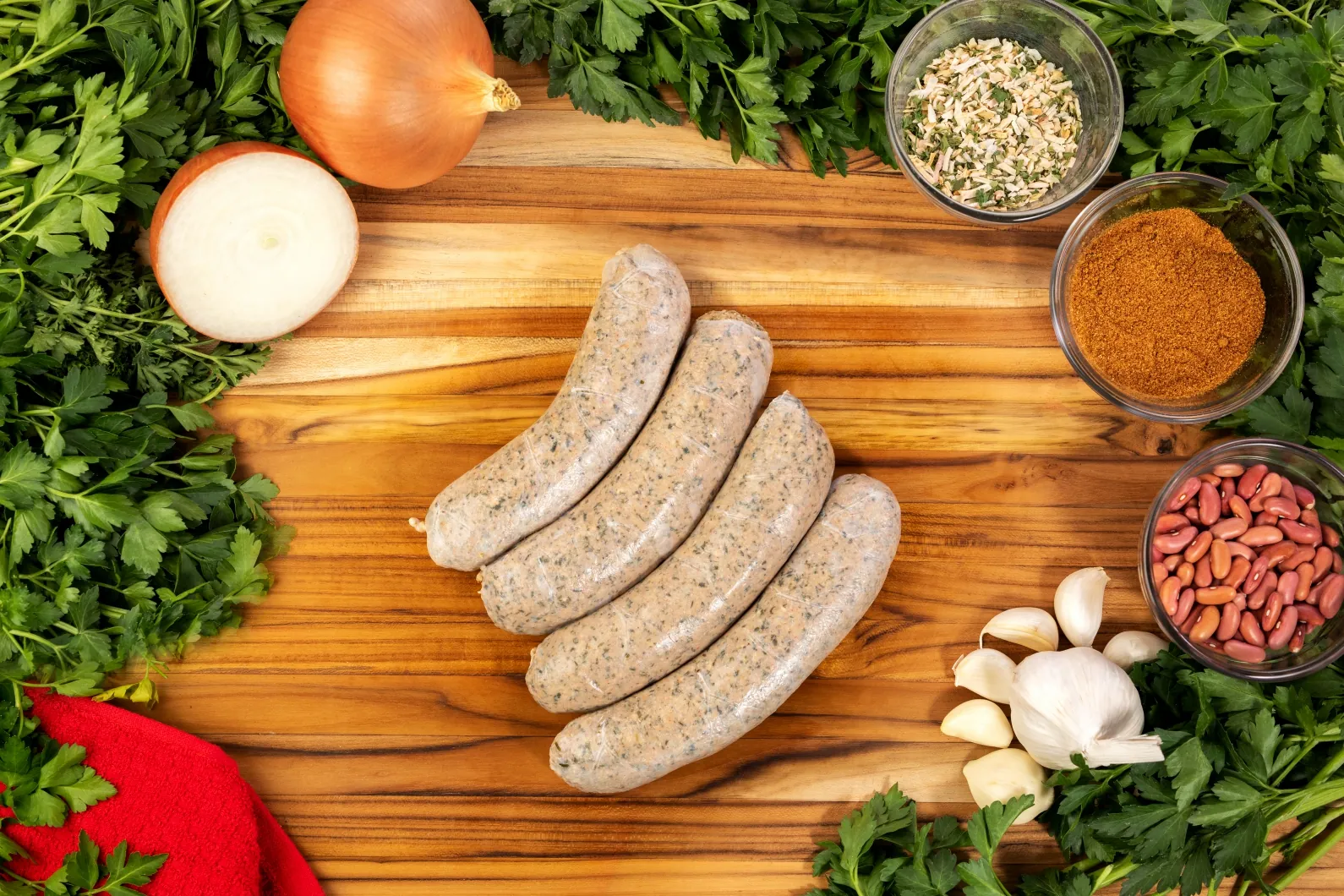Chicken andouille gumbo usually has three main ingredients and another which is a lesser quantity is just as important. The three are, of course, chicken, andouille, and oysters. The other, filé (fee-lay), is such an indispensable part of the dish that many people call all gumbo simply "filé gumbo."
Vegetables used in gumbos are what is on hand and in season - onions, parsley, shallots, celery, bell peppers, even little hot green peppers. These "seasonings," as they are called, are not indispensable as one or even two of them can be omitted if the cook does not have them – and without creating a disastrous gumbo. Possibly the ingredient which can be most substituted for is the chicken. Instead, duck, turkey, goose, rabbit, opossum, raccoon - any fowl or edible animal can be used. Oysters, being relatively seasonal, can be left out completely too. Or mushrooms can be used in their place. Even the white, plastic-looking tree climbers found in the swamps can be cleaned, pulled into strips, and cooked in the gumbo. If fact, nearly any type of seafood can be used instead - crabmeat, shrimp, crayfish. Yet no cook worth the title would even think of building a gumbo without filé. Or andouille.
Filé was here when the first settlers arrived, but the French, as seems to be their way, gave it its present name. The word "filar" in French means "to run thick and ropy," and too much filé in soup or gumbo will have that effect. The Indians had long used the product. It is the powdered, gray-green leaf of the sassafras tree. These trees have grown wild in South Louisiana for centuries. The Indians used the root for medicinal purposes, flavoring, and a drink, and made the leaves into a powder for thickening and seasoning their food.
Early in the Colonial period of the state, when condiments were hard to come by, the Indians learned the commercial value of their filé, and sold it in the market place in New Orleans. Nowadays, it is still a good way for a person to earn a few extra dollars. For its making is work, and though many people have a tree, making filé is often regarded as "too much trouble!" Sometime after August 15, the leaves - which sometimes grow in three different shapes on one stem - are harvested. They are tied into clusters, or twigs, and hung in a secure shed to dry. Several weeks later, they are taken down and ground. The Indians used a hollow log and a rock or wooden pestle for this. These days people use either much the same method or a hand-cranked machine.
After grinding, the filé is sifted through ordinary flour sifters to remove any impurities or stems. Then it is put into a glass container. Now just any glass containers will do - old beer bottles, mustard jars, nonreturnable soft drink bottles - anything small enough to hold a year’s supply. As "just a pinch" of filé goes a long way, not much is needed to last quite some time. Very few people would think of making a presentable gumbo without their sprinkle of the very fine - bought from "the country" -- filé. How many modern kitchens in the cities have a treasured place for an old soft drink bottle full of the powder is not known. But it is certain their numbers are large.
The other ingredient of a good gumbo for which there just isn’t an adequate substitution is andouille. Many times smoked or country sausage is used instead, but there simply is something missing. For one thing, andouille does not lose that wonderful smoked flavor into the gumbo broth as does the smoked sausage. The gumbo will be delicious, of course, but the meat of the sausage may taste rather sweet - or even, horror of horrors, almost tasteless. It is only andouille which can be trusted to taste as good, no matter how much cooking, as it would taste eaten uncooked. So never substitute the two items filé and andouille. Unless you just don’t care how people regard your cooking.











